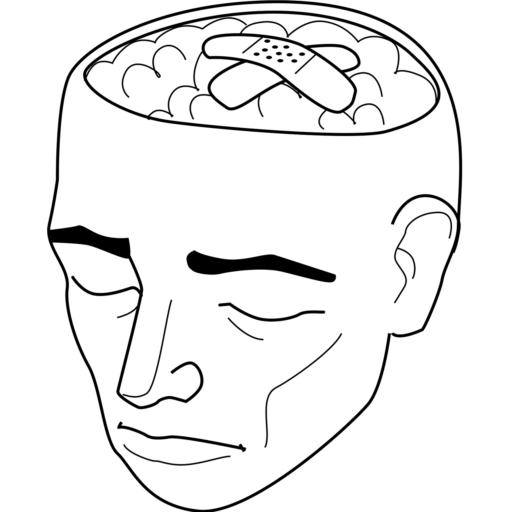Imagine living in constant fear of having a serious illness, obsessively researching symptoms and seeking medical reassurance, even when doctors repeatedly tell you that you are perfectly healthy. This is the reality for individuals suffering from Illness Anxiety Disorder (IAD), formerly known as Hypochondriasis. This condition, characterized by an overwhelming preoccupation with having a severe medical condition, can significantly impact one’s quality of life, relationships, and mental well-being. In this article, we will explore the essential aspects of Illness Anxiety Disorder (IAD), shedding light on its causes, symptoms, and potential treatments, all with the aim of fostering empathy and understanding for those facing this challenging condition.
Definition of Illness Anxiety Disorder (IAD)
Illness Anxiety Disorder (IAD) is a psychological disorder characterized by excessive worry and anxiety about having a serious medical condition. Formerly known as hypochondriasis, IAD is categorized under the somatic symptom and related disorders in the Diagnostic and Statistical Manual of Mental Disorders, Fifth Edition (DSM-5). Individuals with IAD often experience distressing thoughts and preoccupations about their health, which causes significant impairment in their daily lives.
DSM-5 criteria for Illness Anxiety Disorder (IAD)
The DSM-5 outlines specific criteria for diagnosing IAD. To meet the criteria, an individual must:
- Have a pervasive and excessive fear of having a serious illness.
- Experience significant anxiety and worry about their health for at least six months.
- Display excessive behaviors such as repeatedly checking their body for signs of illness or seeking reassurance from medical professionals.
- The anxiety and worry must cause clinically significant distress or impairment in important areas of functioning.
- The individual’s concerns are not better explained by another mental disorder, such as panic disorder or obsessive-compulsive disorder.

Characteristics and symptoms of Illness Anxiety Disorder
Individuals with Illness Anxiety Disorder often exhibit various psychological and behavioral symptoms. These may include:
- Intense anxiety and fear about their health, despite the absence of any medical evidence.
- Persistent thoughts and rumination about potential illnesses.
- Frequent doctor visits and medical tests, striving to find confirmation of their health concerns.
- Preoccupation with bodily sensations, interpreting them as evidence of a severe illness.
- Excessive use of online health resources, searching for information that reinforces their fears.
- Elevated heart rate, sweating, trembling, or other symptoms of general anxiety.
- Impairment in social and occupational functioning due to the excessive worry.
Causes and Risk Factors for Illness Anxiety Disorder
The development of IAD can be influenced by various factors, including psychological, genetic, and environmental components.
Psychological factors contributing to IAD
Psychological factors play a significant role in the development of IAD. Individuals with a tendency to catastrophize or interpret physical sensations as threatening are more likely to develop IAD. Additionally, previous experiences with illness, trauma, or a heightened sensitivity to bodily sensations can contribute to the development of this disorder.
Genetic predisposition to IAD
Research suggests that genetics can contribute to an individual’s vulnerability to Illness Anxiety Disorder. Certain genetic variations may influence the way individuals perceive and interpret bodily sensations, leading to heightened anxiety and worry about their health.
Environmental factors influencing Illness Anxiety Disorder
Environmental factors can also contribute to the development of IAD. Traumatic events, significant life stressors, or exposure to illness in early childhood can increase the risk of developing IAD. Additionally, cultural and societal influences, such as the portrayal of illness in media, can shape an individual’s beliefs and fears about their health.

Distinguishing Illness Anxiety Disorder from other conditions
While IAD shares some similarities with other mental health conditions, it is important to differentiate it to provide appropriate treatment and support.
Differentiating IAD from somatic symptom disorder
Illness Anxiety Disorder is distinct from somatic symptom disorder, although both involve excessive concerns about physical symptoms. In somatic symptom disorder, individuals are primarily preoccupied with the bodily symptoms themselves, whereas in IAD, the focus is on the fear of having a serious illness. Additionally, individuals with somatic symptom disorder may not exhibit the excessive behaviors commonly seen in IAD, such as frequent doctor visits or medical tests.
Similarities and differences between Illness Anxiety Disorder and obsessive-compulsive disorder
IAD shares similarities with obsessive-compulsive disorder (OCD), particularly in relation to excessive checking and reassurance-seeking behaviors. However, the primary focus of OCD is on intrusive thoughts and compulsions, whereas IAD centers around health-related fears and worries.
Overlapping symptoms with anxiety disorders
Illness Anxiety Disorder can present with symptoms that overlap with various anxiety disorders, such as generalized anxiety disorder or panic disorder. These disorders may share features of excessive worry, heightened anxiety, and physical symptoms associated with anxiety. However, in IAD, the worries are specific to health concerns, whereas anxiety disorders are characterized by more general worries or fears.
Diagnosis and Assessment of Illness Anxiety Disorder
Diagnosing Illness Anxiety Disorder involves a comprehensive assessment, including the evaluation of symptoms and ruling out any underlying medical conditions.
Diagnostic criteria for Illness Anxiety Disorder
To diagnose IAD, mental health professionals use the criteria outlined in the DSM-5. This involves a thorough evaluation of the individual’s symptoms, duration of illness-related worries, and functional impairment caused by their concerns. It is essential to determine whether the excessive fears and behaviors are not better accounted for by another mental health disorder.
Medical tests and evaluations for ruling out actual health conditions
When diagnosing Illness Anxiety Disorder, medical professionals may conduct medical tests and evaluations to rule out any actual health conditions that could be causing the individual’s symptoms. This step is crucial to differentiate between real health concerns and excessive worry or anxiety. Collaborative communication between mental health professionals and primary care physicians can facilitate accurate diagnosis and appropriate treatment.

Treatment Options for Illness Anxiety Disorder
Illness Anxiety Disorder can be effectively managed through various treatment approaches, including psychotherapy, medication, and supportive therapies.
Cognitive-Behavioral Therapy (CBT) for Illness Anxiety Disorder
Cognitive-Behavioral Therapy (CBT) is widely recognized as an effective treatment for IAD. CBT aims to identify and challenge maladaptive thoughts and beliefs related to health concerns. It helps individuals develop healthy coping strategies and adaptive behaviors to manage their anxieties. CBT may involve exposure therapy, cognitive restructuring, and relaxation techniques to reduce health-related worries and improve overall functioning.
Medication options for Illness Anxiety Disorder
In some cases, medication may be prescribed to alleviate symptoms associated with Illness Anxiety Disorder. Selective serotonin reuptake inhibitors (SSRIs), such as fluoxetine or sertraline, are commonly prescribed to help reduce anxiety and obsessive thinking patterns. Medication should be used in conjunction with psychotherapy and under the supervision of a qualified healthcare professional.
Supportive therapies and self-help strategies for managing IAD
Alongside formal treatment, supportive therapies and self-help strategies can be beneficial for individuals with IAD. Support groups, where individuals can share their experiences and find understanding, can provide a valuable source of support. Additionally, self-help techniques such as mindfulness, stress management, and self-education can empower individuals to cope with their health anxieties.
Impact of Illness Anxiety Disorder on Daily Life
IAD can significantly impact an individual’s daily life, affecting personal relationships, physical and mental well-being, and academic or work environments.
Effects on personal relationships and social interactions
The excessive worries and preoccupations associated with Illness Anxiety Disorder can strain personal relationships. Loved ones may find it challenging to understand the constant health concerns and reassurance-seeking behaviors. This can lead to frustration, the breakdown of communication, and increased stress within the relationship. Building open lines of communication, providing empathy, and encouraging professional support can help alleviate the strain on personal relationships.
Negative impact on physical and mental well-being
The distress and anxiety experienced by individuals with IAD can have a significant negative impact on their physical and mental well-being. Constant worry and fear can lead to sleep disturbances, fatigue, muscle tension, and other physical symptoms. Over time, chronic anxiety can compound mental health issues, contributing to increased stress and reduced overall well-being.
Challenges in work or academic environments
The preoccupation with health concerns and excessive medical visits associated with Illness Anxiety Disorder can disrupt an individual’s work or academic life. Frequent absences, difficulties staying focused, and reduced productivity can hinder their performance. Seeking workplace accommodations, such as flexible schedules or reduced workloads, can help individuals manage their symptoms effectively.
Coping Strategies for Individuals with Illness Anxiety Disorder
Individuals with IAD can employ various coping strategies to manage their symptoms and improve their quality of life.
Building a support network and seeking professional help
Creating a support network is crucial for individuals with Illness Anxiety Disorder. Surrounding oneself with understanding and empathetic friends, family, or support groups can provide a safe space to express worries and seek reassurance. Seeking professional help from mental health professionals who specialize in anxiety disorders can provide guidance and effective treatment options.
Practicing relaxation techniques and stress management
Learning and implementing relaxation techniques can be immensely helpful in managing the anxiety associated with IAD. Meditation, deep breathing exercises, progressive muscle relaxation, and mindfulness techniques can all promote relaxation and reduce the physiological symptoms of anxiety. Engaging in regular physical activity, maintaining a balanced diet, and ensuring adequate rest can also contribute to overall stress management.
Educating oneself about health-related topics without excessive worry
Education is a powerful tool in managing Illness Anxiety Disorder. Rather than resorting to excessive online research that fuels anxieties, individuals can focus on obtaining information from reputable sources. Partnering with healthcare professionals to understand health-related topics in a non-fearful way can empower individuals to make informed decisions about their well-being and alleviate unnecessary worries.
Tips for Supporting a Loved One with Illness Anxiety Disorder
Supporting a loved one with IAD requires empathy, understanding, and effective communication.
Understanding the person’s experiences and concerns
Listening without judgment and striving to understand the individual’s experiences and concerns are fundamental to supporting someone with Illness Anxiety Disorder. Validating their feelings and acknowledging their fears can help foster a sense of trust and improve the overall support provided.
Avoiding enabling behaviors
While it is essential to be empathetic and supportive, enabling reassurance-seeking behaviors can be counterproductive. Instead of providing constant reassurance, encourage the individual to seek professional help and utilize healthy coping strategies to manage their anxiety. Setting firm boundaries and redirecting the focus towards therapy and self-care can be beneficial for both parties involved.
Encouraging professional help and therapy
Encouraging a loved one with IAD to seek professional help and engage in therapy is vital for effective management of their symptoms. Empower them to take the first steps toward seeking appropriate treatment by providing information about mental health professionals, local therapy options, and support groups. Expressing your willingness to accompany them to appointments or sessions can also provide much-needed support during their journey.
Prevention and Early Intervention for Illness Anxiety Disorder
Preventing and addressing Illness Anxiety Disorder involves raising mental health awareness, identifying anxiety symptoms early on, and promoting a supportive environment.
Promoting mental health awareness and destigmatization
Increasing public awareness about mental health, specifically IAD, can aid in early recognition and intervention. Education campaigns directed at the general population, healthcare professionals, and educators can help foster a more supportive and understanding society.
Identifying and addressing anxiety symptoms early on
Early intervention is crucial in preventing the escalation of IAD. Recognizing and addressing symptoms of anxiety promptly can help individuals receive appropriate care and support. Regular mental health check-ins, both professionally and personally, can aid in identifying and managing anxiety symptoms early on.
Creating a supportive and non-judgmental environment
Creating an environment that supports open dialogue, understanding, and reduces the stigma surrounding mental health is essential for individuals with IAD. Providing a space where individuals feel safe to express their fears and concerns without judgment or ridicule is crucial for their well-being. Offering support and empathy, even if one doesn’t fully comprehend the fears, can go a long way in alleviating distress.
Future Research and Implications for the Field
The field of Illness Anxiety Disorder research continues to evolve, with ongoing studies exploring the underlying mechanisms of the disorder, developing more targeted treatments, and examining the impact of cultural factors.
Exploring underlying mechanisms of Illness Anxiety Disorder
Further research is needed to delve into the neurobiological and cognitive processes that contribute to the development and maintenance of IAD. Understanding these underlying mechanisms can provide insights into potential therapeutic targets and the development of more personalized treatment approaches.
Developing more targeted and effective treatments
Continued research efforts aim to develop more targeted and effective treatments for IAD. Identifying interventions that specifically address the unique cognitive and behavioral aspects of the disorder can potentially enhance treatment outcomes and improve the quality of life for individuals living with IAD.
Elucidating the impact of cultural factors on IAD
Cultural factors play a significant role in individuals’ beliefs and perceptions about health, illness, and seeking medical help. Examining the impact of cultural factors on the development, presentation, and treatment of Illness Anxiety Disorder can provide valuable insights for clinicians, researchers, and policymakers. This knowledge can inform the development of culturally sensitive interventions and contribute to reducing healthcare disparities associated with this disorder.
In conclusion Illness Anxiety Disorder
Encompasses excessive worry and anxiety about having a serious medical condition. It is essential to recognize the symptoms, understand the underlying causes, and differentiate it from other mental health disorders. Early diagnosis, appropriate treatment, and supportive strategies can significantly improve the well-being and daily functioning of individuals living with Illness Anxiety Disorder. By fostering a supportive and empathic environment, we can all contribute to creating a society that understands and supports the unique experiences of individuals with this disorder. Ongoing research and a commitment to increased mental health awareness will undoubtedly lead to improved understanding, treatment, and support for individuals with IAD.
Frequently Asked Questions:
Q1: What is an example of illness anxiety disorder?
An example of IAD involves persistent fears and anxieties about having a severe medical condition, despite reassurances and medical evaluations indicating otherwise. These fears can significantly impact daily life.
Q2: What causes hypochondria?
The exact cause of IAD, or hypochondria, is complex and often involves a combination of genetic, environmental, and psychological factors. Stress, previous health concerns, and a tendency to catastrophize can contribute.
Q3: What is exposure for IAD?
Exposure for illness anxiety disorder involves gradually confronting and managing anxiety-provoking situations related to health concerns. This therapeutic approach aims to desensitize individuals to their fears and promote healthier coping mechanisms.
Q4: Am I sick or is it anxiety?
Distinguishing between real illness and anxiety-related symptoms can be challenging. Consulting with a healthcare professional is essential to rule out any actual health issues and address the underlying anxiety.
Q5: Is illness anxiety a mental illness?
Yes, IAD is classified as a mental health condition. It involves excessive worry about having a serious illness despite a lack of medical evidence. Professional support is crucial for managing and treating this disorder.
Q6: Can you fix hypochondria?
While there is no instant “fix,” effective treatments, including cognitive-behavioral therapy (CBT) and medications, can help individuals manage and alleviate hypochondria symptoms. Consistent therapeutic efforts contribute to positive outcomes.
Q7: Can hypochondria be cured?
Complete cure may not be guaranteed, but individuals can achieve significant improvement and learn to manage hypochondria effectively with the right treatment and support.
Q8: How do I calm my hypochondria?
Calming hypochondria involves seeking professional help, practicing mindfulness, challenging irrational thoughts, and developing healthier coping mechanisms. A tailored approach, often through therapy, is essential.
Q9: What triggers illness anxiety?
Various factors can trigger illness anxiety, including stress, past health experiences, and a heightened awareness of bodily sensations. Identifying triggers and addressing them with therapeutic interventions is crucial.
Q10: How I cured my health anxiety?
Personal accounts of overcoming health anxiety often involve a combination of therapy, self-reflection, and adopting healthier lifestyle habits. It’s important to consult with healthcare professionals for personalized guidance.
Q11: How do I stop being anxious about illness?
Stopping anxiety about illness involves challenging irrational thoughts, seeking professional help, and developing coping strategies. Creating a supportive environment and focusing on overall well-being are key components.
Q12: Do hypochondriacs feel real symptoms?
Yes, hypochondriacs may experience real physical symptoms, often intensified by anxiety. Addressing the underlying anxiety and seeking appropriate medical evaluations can provide relief.
Q13: What should you not say to a hypochondriac?
Avoid dismissing their concerns or downplaying symptoms. Instead, express empathy, encourage professional help, and offer support in their journey toward managing hypochondria.
Q14: What flower helps with anxiety?
While no specific flower is a cure, some individuals find the scent of lavender or chamomile to be calming. Incorporating aromatherapy as a complementary relaxation technique may contribute to anxiety management.
Q15: Who is most affected by IAD?
IAD can affect individuals of any age, gender, or background. However, those with a history of anxiety disorders or who have experienced significant stressors may be more susceptible.
Q16: Does anxiety get worse with age?
Anxiety can manifest or evolve differently with age. While some individuals may experience a reduction in anxiety, others might face new stressors. Seeking timely support is crucial regardless of age.
Q17: Who is at risk for IAD?
Individuals with a family history of anxiety disorders, a predisposition to stress, or a history of health-related traumas may be at a higher risk for developing IAD. Early intervention and support can be beneficial.
Sources:
- Source Illness Anxiety Disorder IAD
- Source 1. Anxiety
- Source 2. Anxiety Medication
- Source 3. Anxiety Treatment
- Source 4. Anxiety Symptoms
- Source 5. Anxiety Disorder